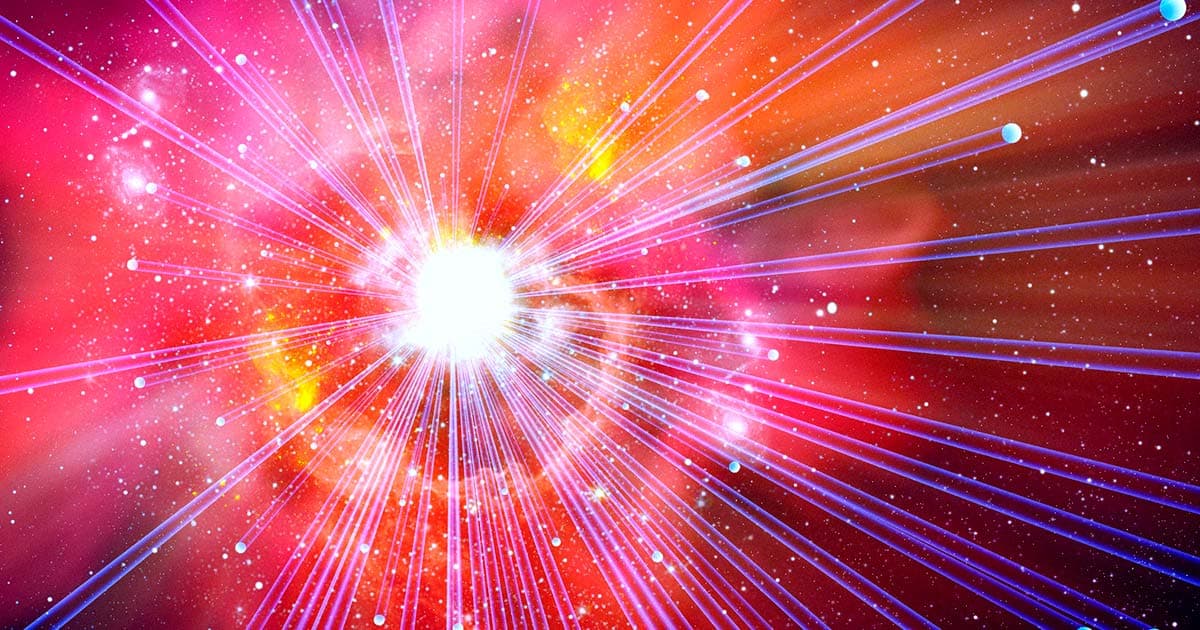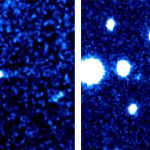Researchers Suggest Fascinating Reason for Enigmatic Signals from Outer Space


Scientists Propose Interesting Explanation for Mysterious Signals From Space (Image Credit: futurism-com)
Fast radio bursts (FRBs), hugely powerful discharges of energy emanating from the furthest reaches of outer space, have confounded scientists for well over a decade.
They’re so powerful that they can release as much energy in a millisecond as the Sun puts out in three entire days, scientists have found.
Over the years, researchers have proposed a number of explanations for the unusual phenomenon. One theory that has been put forward is that FRBs are the result of neutron stars, the extremely dense remains of dead stars, colliding with other neutron stars or even black holes.
Now, as detailed in a paper that has been accepted for publication in the Astrophysical Journal, a team led by University of Toronto scientist Dang Pham has put a new spin on the concept, proposing the bursts could be caused by asteroids slamming into neutron stars — a lesser collision that could still release unfathomable displays of energy.
It’s an interesting new idea about a phenomenon that has generated dozens of different potential explanations — but plenty of work remains until we can get any definitive answers.
The team’s work is circumstantially intriguing, though: they estimated the number of interstellar asteroid collisions with neutron stars, and concluded that it appeared to correlate with the estimated number of FRBs observed in the universe.
“It’s been known for many years that asteroids and comets impacting neutron stars can cause FRB-like signals, but until now, it was unclear if this happened often enough across the universe to explain the rate at which we observe FRBs occurring,” Pham told Space.com. “We have shown that interstellar objects (ISOs), an understudied class of asteroids and comets thought to be present between stars in galaxies throughout the universe, could be numerous enough that their impacts with neutron stars could explain FRBs!”
Previous estimations that take into consideration the two interstellar objects that have been observed so far, ‘Oumuamua in 2017 and Comet Borisov in 2019, suggest there could be anywhere from a trillion trillion to 10 trillion trillion — that’s 26 zeroes — similar objects screaming through the Milky Way alone.
Scientists know of around 1 billion neutron stars in our galaxy. Taking these figures into account, Pham and his collaborators calculated that one collision could occur every 10 million years per neutron star, which is consistent with the observed rate of FRBs across galaxies.
Once the comet or asteroid slams into a neutron star’s magnetic field, it could immediately vaporize and speed up “close to the speed of light,” as Pham told New Scientist. “This ball of plasma is fired along the magnetic field and creates a beam of radiation that might produce an FRB.”
“The energy released depends on the size of the asteroid and the strength of the magnetic field on the neutron star, both of which can vary by a lot, by several orders of magnitude,” coauthor and Oxford University astrophysicist Matthew Hopkins told Space.com.
For an asteroid just over a half mile across, the energy released would be equivalent to “one hundred million times all the energy used by all of humanity over a year,” according to Hopkins.
The team suggests that if their hypothesis is true, the rate of FRBs could increase as the universe ages.
But more work has to be done before we can fully understand these mysterious bursts of energy, from observing more FRBs, calculating how energetic they are, and better understanding how many interstellar objects there are in any given galaxy.
Besides, the new hypothesis is far from perfect. For one, there are certain types of FRBs that occur multiple times at the same source and at regular intervals — almost like clockwork — which don’t perfectly align with seemingly random collisions between neutron stars and asteroids, as Universe Today points out.
However, it’s an intriguing explanation that deserves closer scrutiny as more data continues to pour in.
More on FRBs: Hubble Detects Uber-Strong Radio Transmission From Ancient “Blob”
Share This Article








